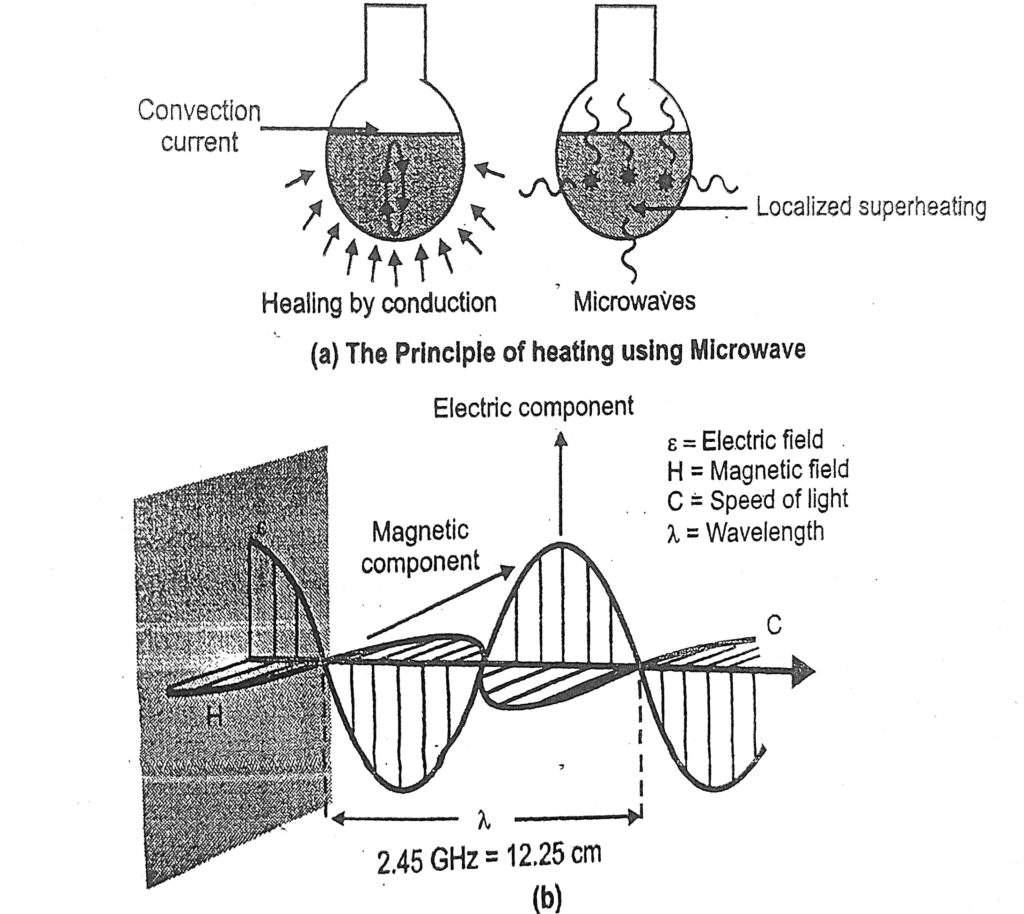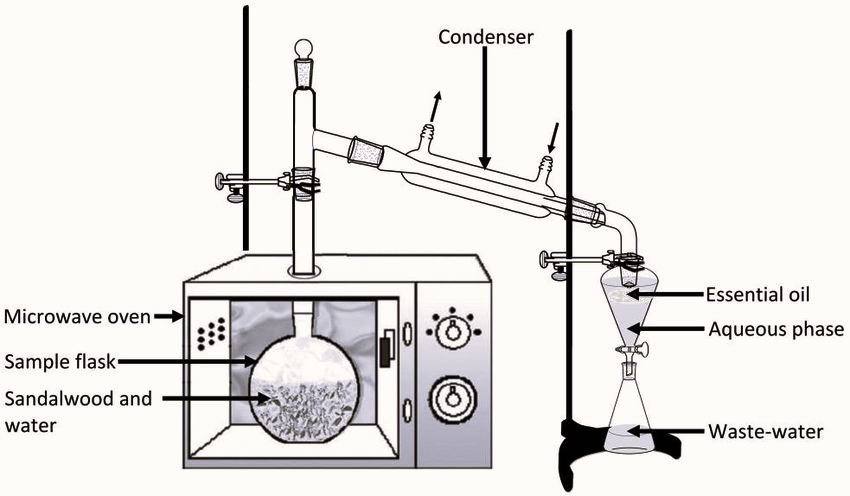Microwave-assisted Extraction is the electromagnetic radiation which has a frequency of 0.3-300 GHz is called microwave. Industrial microwaves are generally operated at 2.45 GHz so that they avoid the interferences of domestic instruments like radio and others. Due to their electromagnetic properties microwaves contain magnetic and electric fields. They are perpendicular to one another. The electric field generates heat through two simultaneous methods i.e. ionic conduction and dipolar rotation. Microwaves transfer the energy to solid matrix and solvent homogenously and very efficiently. Substance (solid matrix and solvent) absorb the energy as per the dielectric constant. The plant material which is present in the microwave transport solvent absorbs the heat of the microwave which causes the heating of moisture present inside the drug. Evaporation occurs due to the heating of moisture and this will produce high vapor pressure. This high vapor pressure cracks the cell wall of the plant drug and releases the active constituent into the solvent. The extraction property of the solvent and its interaction with a microwave can be altered by using solvent mixtures.
The benefit of microwave-assisted extraction is that fewer solvents are required, time consumption is less, high extraction rate and good reproducibility but additional centrifugation or filtration are necessary to remove residue and the efficiency will be poor if the solvent or compound have non-polar property or they are volatile. Example- Extract glycyrrhizic acid from mulethi.
Microwave-Assisted Clevenger Method:
This method is also known as microwave-assisted hydrodistillation.
Principle: In the extraction process, microwave irradiation is related to the interaction of irradiation and water, microwave releases the essential oil and in-situ water is transferred from the inside to the outside of the plant material (Fig. 1.1).

The method combines rapid heating in the microwave field with the traditional solvent extraction. This method is used for the extraction of essential oils from different kinds of aromatic plants such as cinnamon oil, rosemary oil, etc. It is a 2450 MHz multimode microwave with a maximum delivered power of 900 W (Fig. 1.2). Advantages: The method allows the decrease of the extraction time. The method requires less volume of solvents for extraction. It requires a lesser amount of biomass but resulted from a high extraction yield.

Advantages: The method allows the decrease of the extraction time. The method requires less volume of solvents for extraction. It requires a lesser amount of biomass but resulted from a high extraction yield.
Make sure you also check our other amazing Article on : Siddha medicine